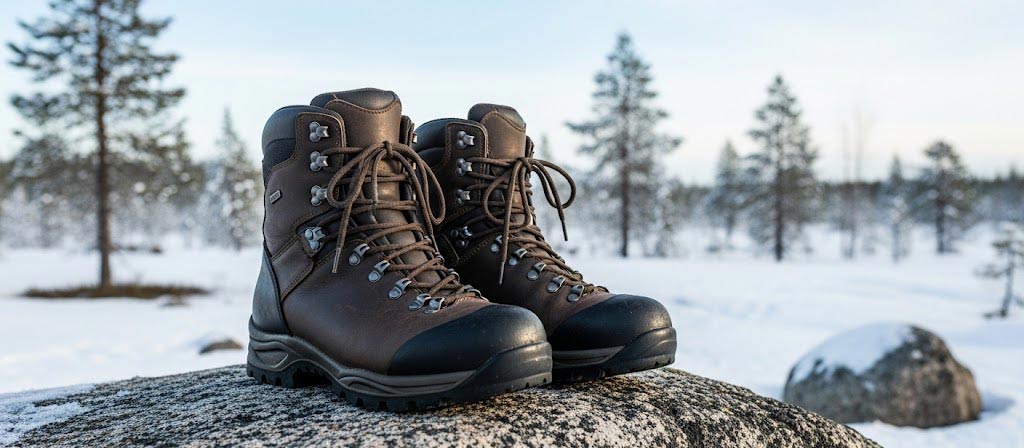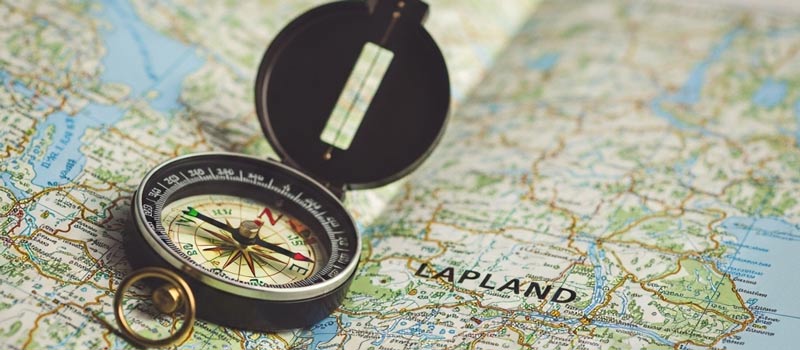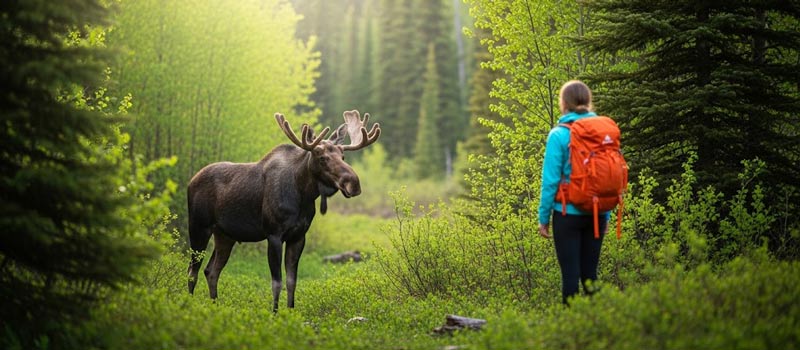Hiking in the Wilderness of Burträsk
The Ultimate Guide for Safe and Unforgettable Tours
The Fascination of the Boreal Forests
The Burträsk region offers a profound nature experience in its characteristic "hilly forest landscape." Far from the beaten path, you can immerse yourself in ancient forests and enjoy the tranquility of mirror-smooth lakes. This guide will prepare you optimally for your adventure.
Trails & Route Planning
The region offers both marked trails and the freedom to forge your own paths, thanks to the Right of Public Access (Allemansrätten). Good orientation is essential. Our interactive map is the first step in your planning.
The Right Equipment

The right equipment determines comfort and safety. The weather can change quickly, and the trails can be demanding.
Q&A on Planning & Equipment
How do I find suitable hiking trails?
Use our interactive map as a starting point. Local tourist information can provide detailed maps. Apps like Komoot can be helpful, but be sure to download maps for offline use.
How are the hiking trails marked?
You will often find orange dots or ribbons on trees. However, never rely solely on markings; a map is essential as markings can fade or be missing.
What is the absolute most important equipment?
The three most important things are: 1. Good footwear (waterproof, ankle-high hiking boots), 2. Weatherproof clothing using a layering system, and 3. Reliable navigation (physical map and compass).
What belongs in the backpack for a day trip?
A packing list includes: Enough water, high-energy snacks, a first-aid kit (including blister plasters, tick remover), a power bank, a headlamp, effective mosquito repellent, and a physical map.
Can I also hike off-trail?
Yes, the Right of Public Access allows this. However, it requires excellent navigation skills with a map and compass. Without these skills, we strongly advise against leaving the marked trails.
When is the best season for hiking?
June to August is the main season with long days and warmer temperatures. September is often spectacular due to the autumn colors ("Ruska") and fewer mosquitoes. There can still be snow in May.
Navigation in the Wilderness

Mobile phone coverage in the forests is unreliable. Relying on a smartphone is risky. Classic navigation methods are therefore a necessity.
Q&A on Navigation
Can I rely on my phone's GPS?
Only to a limited extent. GPS reception usually works, but loading online maps fails without a network connection. Batteries drain faster in the cold. Use your phone as a supplement with offline maps, but always have a backup.
Should I really bring a physical map and compass?
Yes, without a doubt. A map and compass always work. They are your most important lifeline in the wilderness. Learn the basics of how to use them before your tour.
What do I do if I get lost?
Follow the S.T.O.P. rule: **S**top, **T**hink, **O**bserve, **P**lan. If you cannot determine your position, stay in a safe place and call 112 (the emergency number).
What are typical landmarks?
Lakes, rivers, prominent hills, bogs, but also man-made points like power lines or hunting towers ("Älgtorn") are extremely useful landmarks on your map.
How do I correctly estimate distances and time?
Plan conservatively. Walking speed in hilly, often wet terrain is slower than on flat paths. Expect about 3 km/h and plan for sufficient breaks.
Is there an emergency call app or function?
The "SOS Alarm" app can transmit your location directly to the emergency services. The emergency number 112 also works with a weak signal through any available network, as long as there is a minimal connection.
Dealing with Wildlife: Bears, Moose & Co.

Encounters are rare, but possible. Knowing how to behave correctly is crucial for safety.
Q&A on Wildlife
What should I do if I see a bear?
Stay calm, do not run. Make your presence known by speaking calmly. Retreat slowly without turning your back on the bear. Bears are usually shy.
Are moose dangerous and how should I behave?
Moose are not predators, but a cow with a calf is very defensive. Always keep a very large distance. Pinned-back ears are a sign of stress. Retreat slowly and immediately.
How can I generally avoid an encounter?
Make noise while hiking. Talk, sing, clap your hands occasionally. This gives the animals time to notice you and retreat.
I am hiking with my dog. What do I need to consider?
Keep your dog on a leash at all times. An off-leash dog could disturb, provoke, or lead a wild animal directly to you. It is also required by law.
Are there other animals I should watch out for?
In summer, watch out for vipers on sunny paths. Mosquitoes and ticks are much more present. Good insect repellent and checking for ticks are very important.
What about wolves or wolverines?
These animals are extremely shy and live deep in the wilderness. The probability of a sighting is practically zero. They pose no danger to hikers.
The Right of Public Access (Allemansrätten)
This traditional right is the foundation for all outdoor activities. It is a privilege that comes with great responsibility.
What exactly does the Right of Public Access allow?
It allows you to move freely in nature, to hike, to camp for one night, to swim, and to pick unprotected berries and mushrooms for your own use.
What are the most important restrictions?
The core principle is "Do not disturb, do not destroy." You may not camp near houses, enter cultivated land, leave litter, or disturb wildlife.
Am I allowed to make a fire?
Only at designated and safe fire pits. In summer, there is often a strict fire ban (Eldningsförbud). Always check the "Brandrisk Ute" app or with the municipality.
Does the Right of Public Access apply everywhere?
No. In national parks and nature reserves, special, stricter rules may apply (e.g., camping restrictions or mandatory leashes for dogs). Always pay attention to local signage.
Can I pick berries and mushrooms everywhere?
Yes, for personal use. Commercial gathering is not allowed. Protected plant species must, of course, not be picked.
What are the rules for drones?
Drone flying is heavily regulated. It can massively disturb wildlife and violate privacy. Check with the Swedish Transport Agency. In general: it's better to leave them on the ground.
